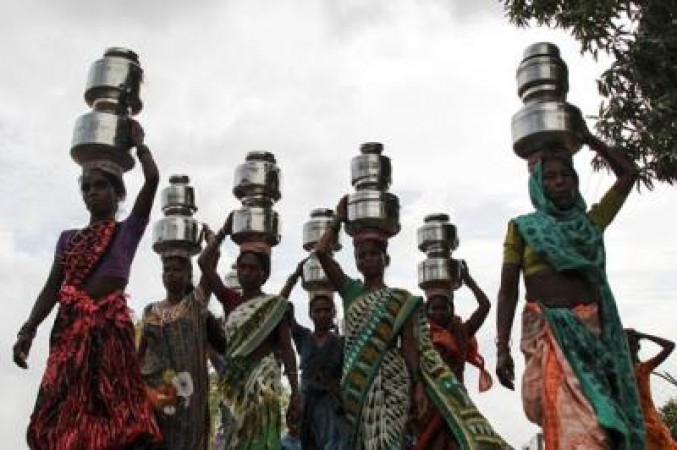
In a world that strives for progress and equality, disparities among different tribes in society continue to be a significant challenge. While many societies advocate equal rights for all individuals, the reality is often different, with unequal opportunities persisting among various tribal communities. This article delves into the complexities surrounding this issue and explores the importance of promoting equal rights and addressing the underlying causes of unequal opportunities.
Understanding Equal Rights and Unequal Opportunities
Defining Equal Rights
Equal rights are the fundamental principles that ensure every individual is entitled to fair treatment, dignity, and respect, regardless of their tribe, ethnicity, or social background. These rights are enshrined in international declarations and constitutions worldwide and are meant to form the foundation of a just and inclusive society.
Identifying Unequal Opportunities
Unequal opportunities refer to the disparities in access to resources, education, employment, healthcare, and other essential services among different tribes. Such inequalities can hinder the social, economic, and political development of marginalized communities, perpetuating cycles of poverty and discrimination.
The Importance of Equal Rights in Society
Promoting Social Justice
Equal rights play a crucial role in promoting social justice. When individuals from all tribes are treated fairly, societies become more inclusive and harmonious. This fosters a sense of belonging and unity, strengthening the overall fabric of the nation.
Fostering Unity and Harmony
When there are disputes over equal rights and unequal opportunities, it often leads to tension and division in society. On the contrary, when equal rights are upheld, different tribes can come together, celebrate their diversity, and work towards common goals.
Factors Contributing to Unequal Opportunities Among Different Tribes
Historical Context
Historical injustices, such as colonization, displacement, and forced assimilation, have had lasting impacts on marginalized tribes. These events have led to the loss of traditional lands, cultures, and identities, contributing to their present-day challenges.
Socioeconomic Disparities
Socioeconomic disparities, including income inequality and limited access to resources, can create barriers for certain tribes to thrive and access better opportunities.
Educational Disadvantages
Lack of access to quality education can perpetuate the cycle of poverty and restrict opportunities for the youth of marginalized tribes.
Case Studies of Disputes on Equal Rights
Tribal Land Rights
Disputes over land ownership have been a significant issue among various tribes, leading to conflicts and legal battles.
Employment Discrimination
Many tribal members face discrimination in the job market, limiting their chances of securing gainful employment.
Access to Education and Healthcare
Limited access to quality education and healthcare facilities disproportionately affects marginalized tribes, hindering their overall development.
Initiatives to Bridge the Gap
Government Policies and Programs
Governments can play a vital role in addressing the issue by implementing policies and programs that promote equal opportunities and protect the rights of all citizens.
Community-Based Efforts
Local communities can initiate grassroots efforts to empower marginalized tribes, creating awareness and advocating for their rights.
Challenges in Implementing Equal Rights
Resistance to Change
Challenging the status quo and addressing centuries-old disparities can encounter resistance from those benefiting from the current system.
Lack of Awareness and Sensitivity
Lack of awareness and sensitivity towards the struggles of marginalized tribes can perpetuate stereotypes and discrimination.
The Role of Media and Public Perception
Shaping Narratives
The media can either perpetuate negative stereotypes or promote understanding and empathy towards different tribes.
Raising Awareness
Media platforms can be used to raise awareness about the challenges faced by marginalized tribes and the importance of equal rights.
Overcoming Prejudices and Stereotypes
Encouraging Dialogue and Empathy
Engaging in open and respectful dialogue can help break down barriers and encourage empathy between different tribal groups.
Celebrating Diversity
Society can benefit from embracing the rich cultural diversity of various tribes, fostering a sense of pride in one's heritage.
Promoting Inclusivity and Empowerment
Empowering Marginalized Tribes
Empowerment through education, skill development, and economic opportunities can uplift marginalized tribes.
Encouraging Participation and Representation
Inclusion in decision-making processes and representation in various sectors can ensure the voices of all tribes are heard. The dispute over equal rights and unequal opportunities among different tribes is a complex and multifaceted issue that demands attention and action. By fostering understanding, empathy, and inclusivity, societies can take significant strides towards bridging the gap and creating a fair and just world for all. It is imperative for governments, communities, and individuals to collaborate in dismantling barriers and upholding the principles of equal rights for every member of society.
Sony Unveils Limited Edition PlayStation 5 Marvel's Spider-Man 2 Bundle
Microsoft Successfully Acquires Activision Blizzard, Paving the Way for Gaming Industry Dominance
OpenAI to soon set up for the New App Launch on Android and iOS